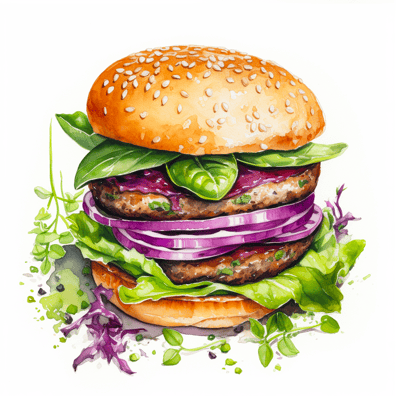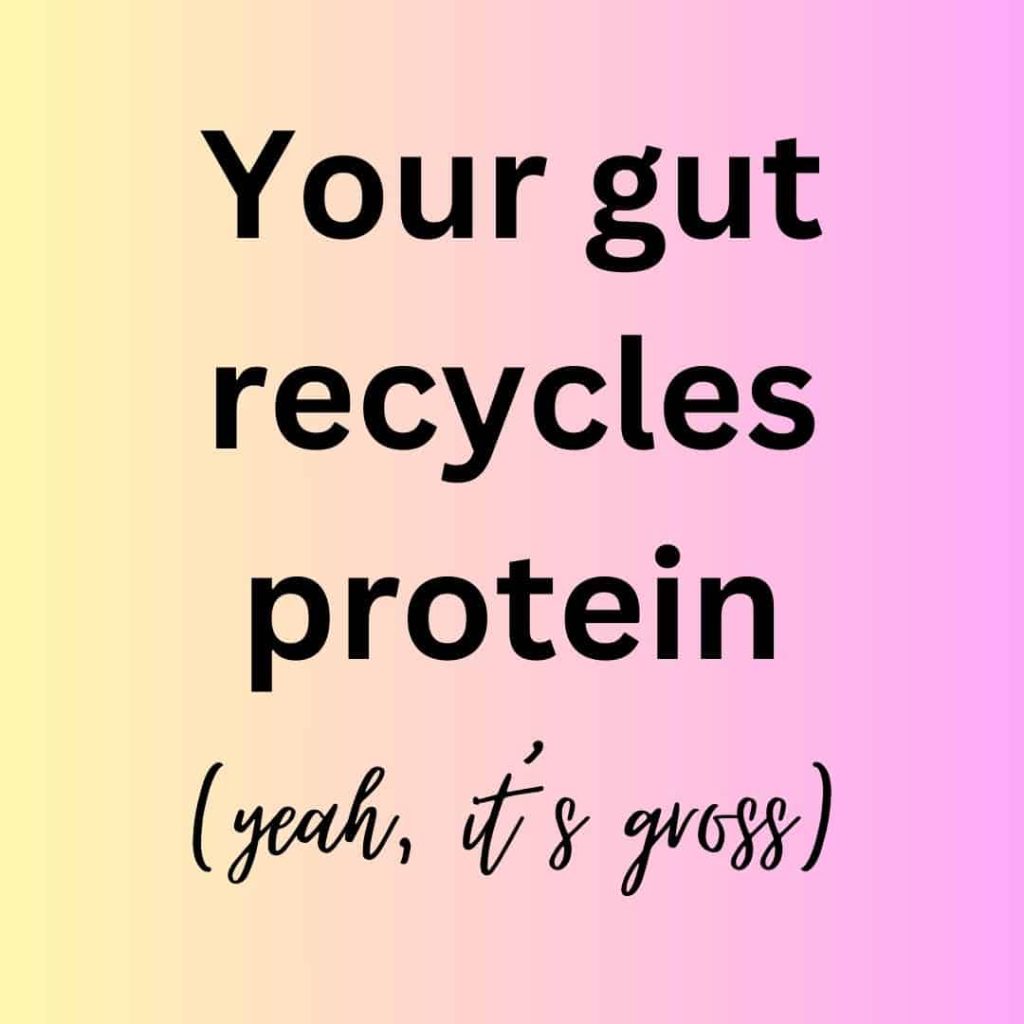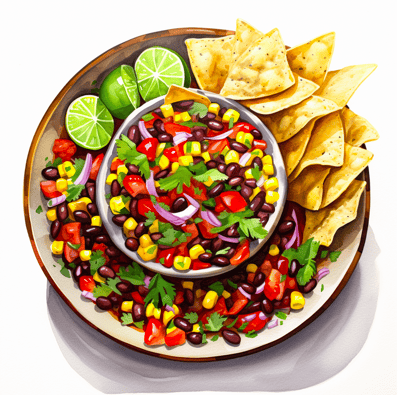
Protein is often at the forefront of dietary choices, commonly associated with muscle building and being essential for health.
But what if there is more to the story?
What if the kind of protein you eat also dramatically enhances your skin’s health and beauty? And even your waistline?
Discover how plant sources of protein can enhance your attractiveness without compromising on any of your nutritional needs such as getting sufficient protein or even iron.
Ready?
Hi, I’m Hazel
I gave up on skincare after years of issues with acne and sensitive skin.
But after going plant-based, my skin cleared up and even started to glow. Now I help women reveal their natural beauty with simple, delicious plant-based food.
I also used to be a nurse, and love nerding out on nutritional science (high-quality science, that is).

As usual, this post is based on the strongest nutritional evidence I could find with a focus on the simplest, most delicious foods
…because who has time to waste on actions that don’t work?
The quick version:
Plant-based proteins offers improve your skin health, weight management, and overall wellness. By eating a variety of colourful, protein-rich plant foods like beans and legumes you will naturally meet your protein needs healthily without the need for calorie counting.
The Smart Way to Compare Meat and Plant Protein
When making dietary choices, it’s common to focus solely on the protein content—how much and how complete.
However, this narrow view misses other important factors that separate meat-based protein from plant-based protein. Factors which impact your health, skin and waistline in a major way.
Meat-Based Protein: What’s in the Mix?
Meat is praised for being a complete protein, providing all essential amino acids in optimal ratios. However, it has companions that aren’t always beneficial for your health or skin:

Harmful Additives: Meat often contains elements like hormones and antibiotics, which can disrupt hormonal balance and gut health, and therefore skin health (1, 2).
Pro-inflammatory Agents: Certain fats and compounds in meat, like arachidonic acid, can promote inflammation, affecting the skin’s appearance and limiting your progress with inflammatory skin conditions like acne, psoriasis and eczema (3).
Saturated Fats and Cholesterol: These can contribute to heart disease and other health issues, potentially worsening skin health and accelerating ageing.
Plant-Based Protein: The Unsung Hero
Plant proteins are sometimes labeled as incomplete because they typically lack one or more essential amino acids. However, this view doesn’t capture the full spectrum of benefits they offer:

Rich in Fibre and Antioxidants: These compounds support digestion and combat oxidative stress, which is crucial for maintaining youthful, vibrant skin (4, 5).
Low in Saturated Fats: Plant-based diets are associated with lower levels of bad cholesterol and a reduced risk of many chronic diseases. And how can you have glowing skin when you’re actually sick on the inside?
Natural Vitamins and Minerals: Essentials like vitamin c, which is abundant in many plant foods, not only aid in iron absorption but also are vital for collagen synthesis, essential for skin elasticity and strength (6).
Making the best protein choice for you means looking at the bigger picture, considering what each brings to the table beyond just the basic protein content.
But Isn’t Plant-Based Protein Incomplete?
While many plant proteins do not contain all essential amino acids in the same proportions as animal proteins, luckily our bodies have already adapted to this.
Now the following might sound a bit gross, but hear me out: it turns out that our bodies use our gut as a kind of protein recycling system (7).

Which means we don’t actually require a complete protein profile in every food.
Here’s what this means in practical terms:
Protein Recycling
Every day, our bodies break down and recycle proteins, sending twice the recommended daily protein intake into our gut, where most of it is digested and reabsorbed (7).
This means that our body has a system in place to ensure it uses amino acids efficiently.
Variety is Key
You can eat different plant-based proteins throughout the day (like nuts in the morning, beans at lunch, and tofu at dinner).
Your body will pool the amino acids from these various sources over time to form the proteins that you specifically need.
Nutritional Bonus
Plant proteins can meet your protein needs but also provide other health benefits, such as fibre, antioxidants, and minerals, which are great for overall health and particularly beneficial for maintaining youthful, healthy skin.
Can You Really Get Enough Protein From Plants?
This is a common misconception.
The truth is, even vegans get more than the recommended amount of protein (8). Here’s the surprising thing – people who eat a meat-rich diet are actually getting too much protein.
I love it when I see science like this – since then I haven’t given protein a second thought…and I’m better off for it.
Takeaway
Even if going completely meat-free is too scary, you can still have the confidence that any step you take towards a plant-based diet is not going to be detrimental to your health.
Full-time plant-munchers like myself can also be confident that our body will efficiently use whatever proteins we eat, and recycle protein sources in what we really need as it sees fit.
I personally love this – because it means I haven’t stressed about protein for years!
Isn’t It Better to Get Iron from Meat Though?
While it’s true that meat-based heme iron is more readily absorbed, plant-based diets offer iron from non-heme sources which are actually safer and come without the health risks associated with excessive heme iron intake.
Discover how you can optimise iron absorption from plant sources, and my number one easiest trick to prevent iron loss in:
How to Prevent Iron Deficiency on a Plant-Based Diet
4 Ways Meat Affects Your Beauty
While meat is commonly recognised for its high protein content, it has other components that impact your skin and beauty negatively. To make the best choice for yourself, you need to know the fuller picture.

Here are four major types of skin concerns that meat can make worse:
1. Accelerates Ageing
The following elements in meat can speed up the ageing process by affecting skin elasticity and promoting the formation of wrinkles:
Methionine
This amino acid increases homocysteine levels, which promotes oxidative stress, damaging cells and so speeding up ageing (9).
Impact of Meat: Significant source of methionine.
Plant Comparison: Plant proteins have lower levels of methionine, helping to slow ageing (10).
Advanced Glycation End-products (AGEs)
AGEs damage collagen, the protein that keeps skin firm, leading to wrinkles (11).
Impact of Meat: Significant source especially when meat is cooked at high temperatures and when fried (12).
Plant Comparison: Fewer AGEs in plants, plus antioxidants that combat AGE effects (12).
Leucine and TOR Activation
Overstimulates TOR (Target of Rapamycin), a protein that regulates cell growth and metabolism. High TOR activity can accelerate ageing processes and exacerbate skin issues by increasing cell turnover and oxidative stress 13).
Impact of Meat: High levels of leucine in meat overstimulate TOR, accelerating ageing and exacerbating skin issues (13).
Plant Comparison: Lower leucine levels in plant proteins help maintain balanced TOR activation.
2. Promotes Inflammation
Inflammatory agents in meat can exacerbate skin conditions like acne, eczema, and rosacea:
Arachidonic Acid
Triggers inflammation that can worsen inflammatory skin conditions.
Impact of Meat: Promotes inflammation that can worsen skin conditions (14).
Plant Comparison: Absent in plant proteins, reducing diet-induced inflammation. Plants are also rich in antioxidants which reduce inflammation.
Heme Iron
Excess absorption can lead to inflammation and oxidative stress (15).
Impact of Meat: Quickly absorbed, leading to potential oxidative damage.
Plant Comparison: Absorbed more gradually in plants, allowing for better regulation.
3. Disrupts Hormonal Balance
Hormones
Hormones in meat can disrupt your natural hormonal balance, affecting skin health:
Impact of Meat: Natural and added hormones in meat may lead to acne and uneven skin texture (16).
Plant Comparison: Free from animal hormones, plant proteins support stable hormonal levels.
4. Pollutes and Contaminates
Environmental toxins accumulated in meat can dull the skin and increase oxidative stress:
Trans Fats
May delay skin healing, reduces protein synthesis, impacts skin elasticity and contributes to body fat (17).
Impact of Meat: May be high in trans fats.
Plant Comparison: Plant proteins do not contain these fats, aiding skin health.
Toxic Pollutants
Toxins and pollutants are damaging to health.
Impact of Meat: Meat is the main dietary source of pollutants that then cause oxidative damage (18, 19).
Plant Comparison: Plants absorb fewer toxins; organic options are even cleaner.
By understanding these four categories and the specific effects of meat consumption on skin health, you can make informed dietary choices. These choices not only support your overall health but can also significantly enhance your skin’s beauty and vitality.
Skincare: Why Plant-Based Protein is Superior
Plant-based diets offer a wealth of benefits that go beyond simple protein. They contain unique components that are either absent or barely present in animal-based foods, making them an excellent choice for maintaining skin health and overall beauty.

Abundant in Antioxidants
Antioxidants are crucial for combating oxidative stress, one of the primary causes of ageing and skin deterioration. When comparing the antioxidant content of plant-based foods to animal-based foods, the difference is stark:
Antioxidant Content Comparison
A hundred grams of steak has an antioxidant value of just 0.02, and salmon scores slightly higher at 0.03. In contrast, 100g of red beans boast an antioxidant value of 0.33, or 16 times as many antioxidants. Black-eyed beans double that again with a score of 0.75 (20).
Impact on Skin: The high antioxidant content in plants protects against cellular damage, helps maintain skin elasticity, and reduces signs of ageing.
Fibre: Exclusive to Plants
Fibre, which is absent in meat but present in plants, plays a significant role in skin health and weight management:
Gut Health
Fibre aids digestion and regularity, which is important for eliminating toxins from the body, contributing to clearer skin.
Nutrient Absorption
Fibre can trap sugars and block the absorption of fat and starch, which moderates blood sugar levels and reduces the risk of inflammation, benefiting skin health.
Legumes: Two-in-One Nutrition Stars
Legumes, which are rich in protein, also qualify as vegetables due to their high nutrient content (21):
Nutrient Diversity
Beyond providing protein, legumes are loaded with vitamins, minerals, and antioxidants, supporting skin health and overall wellness.
Weight Loss: Let Plants Do All the Work
Despite the common belief that you need high amounts of animal protein to feel full and manage weight, plant-based proteins prove otherwise.

Here’s how the other nutrients in plant-based foods (which are pretty exclusive to plants) help you feel full, finally lose the weight, and ditch the calorie counting:
Plants Make You Absorb Less Calories
This discovery amazed me, and made helped me forget all about calorie counting when I went plant-based:
Absorb Less Calories from Fat
When you include more whole grains like whole-wheat bread in your diet, your body naturally excretes more fat (22).
One study found that people who eat whole-wheat bread with butter expel over double the amount of fat compared to those who eat white bread with butter.
And Less Calories from Carbs
Choosing whole grain bread over white bread leads to excreting nearly ten times the carbohydrate calories, thanks to the high fibre content which binds to carbs, reducing their absorption (22).
They Also Boost Your Metabolism
Let the high fibre content only found in plants rev up your metabolism, so much that you’ll be burning more calories compared to a meat-eater even even as you sleep! (23, 24).
Plants Help You Feel Fuller, Longer
Hormonal Balance
The first way is by positively impacting your hormones.
For example, eating beans and other legumes for dinner can significantly affect your hunger hormones the next day.
One study showed that these meals led to reduced hunger the following morning, thanks to lower levels of the hunger hormone ghrelin and higher levels of satiety (feeling full) hormones (25).
You Also Eat Less Later
The effects of plant-based meals extend beyond immediate satiety to influencing your eating behavior at subsequent meals.
Example 1: Nuts
In a meticulously designed double-blind study (read: high-quality), participants were given two types of smoothies: one contained actual walnuts, while the other was a placebo (26).
Both smoothies were identical in calories and included mango, strawberries, banana, berries, and juice. The placebo even added walnut flavouring to perfectly mimic the nut-containing smoothie.
Despite their identical caloric content and indistinguishable taste, those who drank the walnut-containing smoothies reported feeling fuller and more satisfied just before lunch.
Unlike those in the group drinking the placebo. This occurred even though both groups consumed their smoothies in liquid form, which typically allows for rapid digestion and fat absorption.
You’ll also love:
Nuts About You: The Best Nuts for Weight Loss
Example 2: Plant-Based ‘Chicken’
One research study pitted real chicken with a plant-based replacement to see what happened. People who ate a lunch based on plant-based chicken and rice then ate 18% less at dinner compared to those who had real chicken and rice (27).
So not only did they eat less calories with the plant-based chicken at lunch, they then naturally ate less calories at dinner!
It’s Easier Than Calorie Counting
A research study pitted beans (a type of legume) against traditional calorie restriction diets, with thrilling results (28).
People in the legume group had to add five cups of legumes like lentils, chickpeas, and navy beans onto their weekly diet.
The result?
They experienced reduced waist sizes and better blood sugar control, similar to those who cut calories.
If you’re thinking “Hang on, you said eating legumes was better than calorie counting – the two groups had the similar outcomes!”…I still claim that legumes are better. Think about the amount of mental energy it takes to add a few cups of beans and chickpeas to your usual diet vs calorie counting every single meal and snack.
Who can be bothered?! So yeah, I think eating more with less effort is better.
If you want some inspiration to turn this into reality, you’ll love:
How to Effortlessly Eat More Legumes Everyday
Whether you’re single or having to cook for a family that won’t stop eating meat, love to cook or don’t have any skills (like me), there’s a helpful tip in here for you.
The Easiest Ways to Start
Here’s how to easily incorporate more plant-based protein sources into your diet.
When You’re Feeling Snack-y
Choose protein-rich snacks that are satisfying and nutritious:
- Roasted chickpeas or spiced nuts make for crunchy, high-protein snacks.
- Peanut or almond butter on whole-grain toast provides a good mix of protein and healthy fats.
When You Don’t Want to Cook
Just add some plant-protein to what you already have going:
- Edamame: An easy entree that’s high in protein and can also be eaten on the go.
- Canned lentils and chickpeas: Toss them into a salad for a protein boost without any cooking.
When You Still Want to Eat Your Favourite Meaty Meals
Transform traditional meals with high-protein, plant-based alternatives:
- Legumes: Add some lentils into your spaghetti or beans to your chilli.
- Apples: While not protein-rich, eating an apple before your meal helps you feel full sooner. This will help you eat less of your fave meat-rich meal without feeling like you are depriving yourself of it’s taste or texture.
When You Want to Prevent Wrinkles
Include protein sources that are also known for their skin health benefits:
- Soy products like tofu and tempeh are rich in isoflavones, which may help protect the skin by maintaining collagen.
- Black beans and red lentils: The more colourful the plant, the more antioxidants it has. These are essential for maintaining youthful skin.
When You Want to Lose Weight
Incorporate these filling, low-calorie, high-protein plant foods:
- Legumes such as black beans, lentils, and chickpeas are excellent in salads and soups, helping you feel full longer with fewer calories.
- Quinoa: Serve this protein-rich grain as a base for salads or as a side instead of rice to increase your protein intake while still keeping texture.
Simple!
Conclusion
Embracing plant-based proteins not only dispels the myth that they are inferior to meat but also demonstrates their superior benefits for health and beauty. Far from causing deficiencies, a well-planned plant-based diet provides all the necessary protein and iron, alongside significant advantages for your skin and weight management. The natural fibre and antioxidants in plants enhance skin health and foster weight loss more effectively than meat, without the need for rigorous calorie counting. By choosing plant-based foods, you’re opting for a nutritious, fulfilling path that naturally balances your diet and enriches your life, proving that the best nourishment is simple and natural.
References
Most references below will link to the original peer-reviewed study itself. However, sometimes I will link to a video over at NutritionFacts.org instead, which is by far the single best resource of brutally transparent nutritional evidence you will ever see. Dr Greger tells a great story about the realities of the science and if I think you will benefit more from one of his videos, the link will take you there instead.
Happy nerding!
- The Human Health Effects of Cultivated Meat: Chemical Safety at NutritionFacts.org
- Ax E, Lampa E, Lind L, et al. Circulating levels of environmental contaminants are associated with dietary patterns in older adults. Environ Int. 2015;75:93-102. doi:10.1016/j.envint.2014.11.008
- Wang D, DuBois RN. Urinary PGE-M: a promising cancer biomarker. Cancer Prev Res (Phila). 2013;6(6):507-510. doi:10.1158/1940-6207.CAPR-13-0153
- Mishra BP, Mishra J, Paital B, et al. Properties and physiological effects of dietary fiber-enriched meat products: a review. Front Nutr. 2023;10:1275341. Published 2023 Nov 30. doi:10.3389/fnut.2023.1275341
- Carlsen MH, Halvorsen BL, Holte K, et al. The total antioxidant content of more than 3100 foods, beverages, spices, herbs and supplements used worldwide. Nutr J. 2010;9:3. Published 2010 Jan 22. doi:10.1186/1475-2891-9-3
- Geesin JC, Darr D, Kaufman R, Murad S, Pinnell SR. Ascorbic acid specifically increases type I and type III procollagen messenger RNA levels in human skin fibroblast. J Invest Dermatol. 1988;90(4):420-424. doi:10.1111/1523-1747.ep12460849
- Moughan PJ, Rutherfurd SM. Gut luminal endogenous protein: implications for the determination of ileal amino acid digestibility in humans. Br J Nutr. 2012;108 Suppl 2:S258-S263. doi:10.1017/S0007114512002474
- Do Vegetarians Get Enough Protein? at NutritionFacts.org
- López-Torres M, Barja G. Lowered methionine ingestion as responsible for the decrease in rodent mitochondrial oxidative stress in protein and dietary restriction possible implications for humans. Biochim Biophys Acta. 2008;1780(11):1337-1347. doi:10.1016/j.bbagen.2008.01.007
- McCarty MF, Barroso-Aranda J, Contreras F. The low-methionine content of vegan diets may make methionine restriction feasible as a life extension strategy. Med Hypotheses. 2009;72(2):125-128. doi:10.1016/j.mehy.2008.07.044
- Uribarri J, Woodruff S, Goodman S, et al. Advanced glycation end products in foods and a practical guide to their reduction in the diet. J Am Diet Assoc. 2010;110(6):911-16.e12. doi:10.1016/j.jada.2010.03.018
- Chen CY, Zhang JQ, Li L, et al. Advanced Glycation End Products in the Skin: Molecular Mechanisms, Methods of Measurement, and Inhibitory Pathways. Front Med (Lausanne). 2022;9:837222. Published 2022 May 11. doi:10.3389/fmed.2022.837222
- Zoncu R, Efeyan A, Sabatini DM. mTOR: from growth signal integration to cancer, diabetes and ageing. Nat Rev Mol Cell Biol. 2011;12(1):21-35. doi:10.1038/nrm3025
- Wang D, DuBois RN. Urinary PGE-M: a promising cancer biomarker. Cancer Prev Res (Phila). 2013;6(6):507-510. doi:10.1158/1940-6207.CAPR-13-0153
- Geissler C, Singh M. Iron, meat and health. Nutrients. 2011;3(3):283-316. doi:10.3390/nu3030283
- The Human Health Effects of Cultivated Meat: Chemical Safety at NutritionFacts.org
- Cao C, Xiao Z, Wu Y, Ge C. Diet and Skin Aging-From the Perspective of Food Nutrition. Nutrients. 2020;12(3):870. Published 2020 Mar 24. doi:10.3390/nu12030870
- Ax E, Lampa E, Lind L, et al. Circulating levels of environmental contaminants are associated with dietary patterns in older adults. Environ Int. 2015;75:93-102. doi:10.1016/j.envint.2014.11.008
- Lee DH, Lee IK, Song K, et al. A strong dose-response relation between serum concentrations of persistent organic pollutants and diabetes: results from the National Health and Examination Survey 1999-2002. Diabetes Care. 2006;29(7):1638-1644. doi:10.2337/dc06-0543
- Carlsen MH, Halvorsen BL, Holte K, et al. The total antioxidant content of more than 3100 foods, beverages, spices, herbs and supplements used worldwide. Nutr J. 2010;9:3. Published 2010 Jan 22. doi:10.1186/1475-2891-9-3
- Didinger C, Thompson HJ. Defining Nutritional and Functional Niches of Legumes: A Call for Clarity to Distinguish a Future Role for Pulses in the Dietary Guidelines for Americans. Nutrients. 2021;13(4):1100. Published 2021 Mar 27. doi:10.3390/nu13041100
- Macrae TF, Hutchinson JC, Irwin JO, Bacon JS, McDougall EI. Comparative digestibility of wholemeal and white breads and the effect of the degree of fineness of grinding on the former. J Hyg (Lond). 1942;42(4):423-435. doi:10.1017/s0022172400035634
- Institute of Medicine (US) Panel on the Definition of Dietary Fiber and the Standing Committee on the Scientific Evaluation of Dietary Reference Intakes. Dietary Reference Intakes Proposed Definition of Dietary Fiber. Washington (DC): National Academies Press (US); 2001.
- Castiglia-Delavaud C, Verdier E, Besle JM, et al. Net energy value of non-starch polysaccharide isolates (sugarbeet fibre and commercial inulin) and their impact on nutrient digestive utilization in healthy human subjects. Br J Nutr. 1998;80(4):343-352. doi:10.1079/096582198388292
- Nilsson A, Johansson E, Ekström L, Björck I. Effects of a brown beans evening meal on metabolic risk markers and appetite regulating hormones at a subsequent standardized breakfast: a randomized cross-over study. PLoS One. 2013;8(4):e59985. doi:10.1371/journal.pone.0059985
- Brennan AM, Sweeney LL, Liu X, Mantzoros CS. Walnut consumption increases satiation but has no effect on insulin resistance or the metabolic profile over a 4-day period. Obesity (Silver Spring). 2010;18(6):1176-1182. doi:10.1038/oby.2009.409
- Burley VJ, Paul AW, Blundell JE. Influence of a high-fibre food (myco-protein) on appetite: effects on satiation (within meals) and satiety (following meals). Eur J Clin Nutr. 1993;47(6):409-418.
- Mollard RC, Luhovyy BL, Panahi S, Nunez M, Hanley A, Anderson GH. Regular consumption of pulses for 8 weeks reduces metabolic syndrome risk factors in overweight and obese adults. Br J Nutr. 2012;108 Suppl 1:S111-S122. doi:10.1017/S0007114512000712